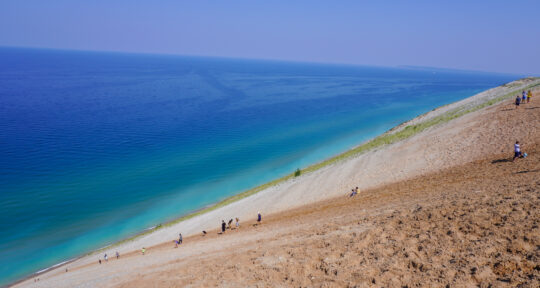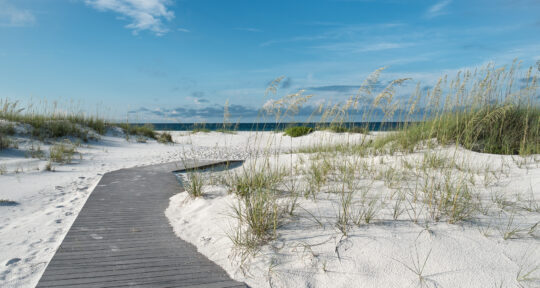Rivulets of water pour from the brim of my hooded jacket and fat rain droplets land on my face. I am the last in a line of seven people, standing ankle-deep in mud during the pre-dawn hours of a stormy March morning. Our guide, a grizzled octogenarian who walks with a burly stick for balance, gave us strict instructions before leaving the interior of Nebraska’s Rowe Sanctuary: Talking scares the birds.
Terrified to cross the older gentleman, our solemn conga line of people stand in absolute silence, save for the pitter-patter of raindrops pouring from the sky. Under normal circumstances, my waterlogged state would be an abysmal experience, but today is not normal. In fact, I am elated. I’m finally going to see the cranes.
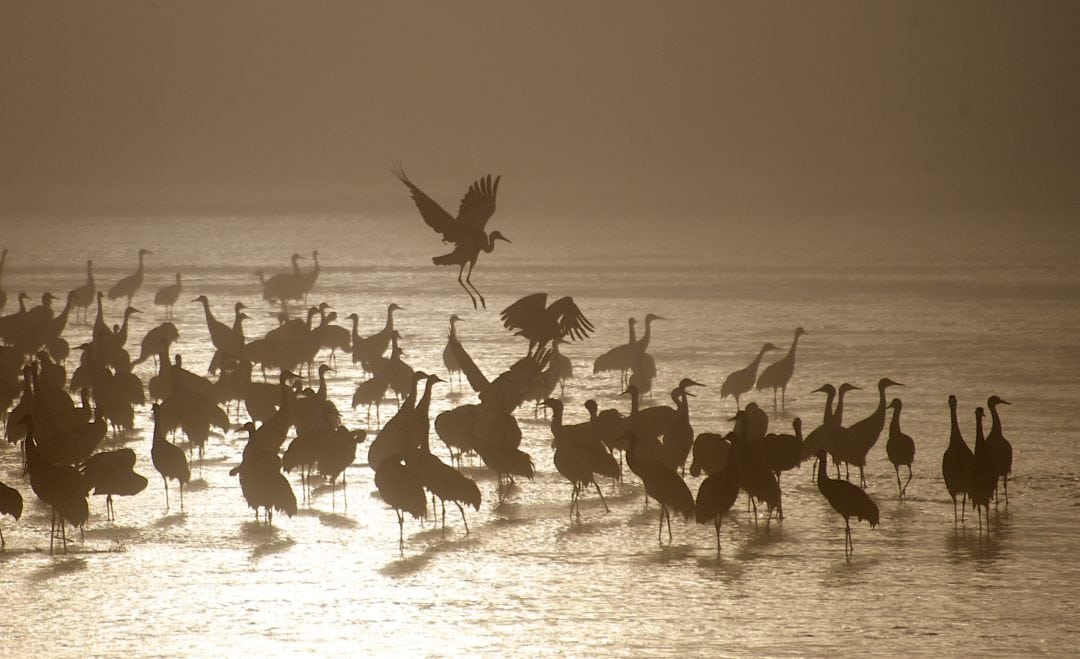
Birds of a feather
Every spring from late February to early April, 600,000 cranes—80 percent of the world’s population—descend upon an 80-mile stretch of habitat in rural Nebraska during the world’s largest crane migration.
In a testament to both evolution and good genetics, these birds have been following the same route for more than a thousand years. Known as the Central Flyway, it is a bird migration path that stretches from South America to the arctic regions of North America. Similar to an hourglass, the Flyway bottlenecks in Nebraska’s Platte River Valley where the intertwining river channels mingle with the empty corn fields. The result: a perfect resting spot for cranes to fatten up before continuing their northbound journey.
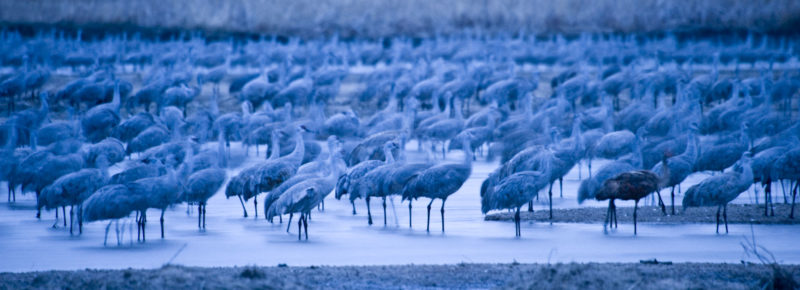
The majority of the birds arriving in Nebraska are sandhill cranes. These plentiful, red-capped beauties stand 4 feet high with a wingspan that stretches nearly 7 feet across. However, they aren’t the only feathered friends arriving to this Nebraskan party.
For many, the whooping crane has become an icon for endangered species everywhere. At nearly 5 feet in height, it is the tallest bird in North America (and the only other crane along with the sandhill), but its physical stature does not help its survival status. In large part due to the loss of its wetland habitat, the whooping cranes’ numbers dipped to a paltry 15 birds in 1941. Thanks to conservation efforts and the Endangered Species Act, the numbers have since been recovered, with 2018 data showing over 500 whooping cranes in the wild.
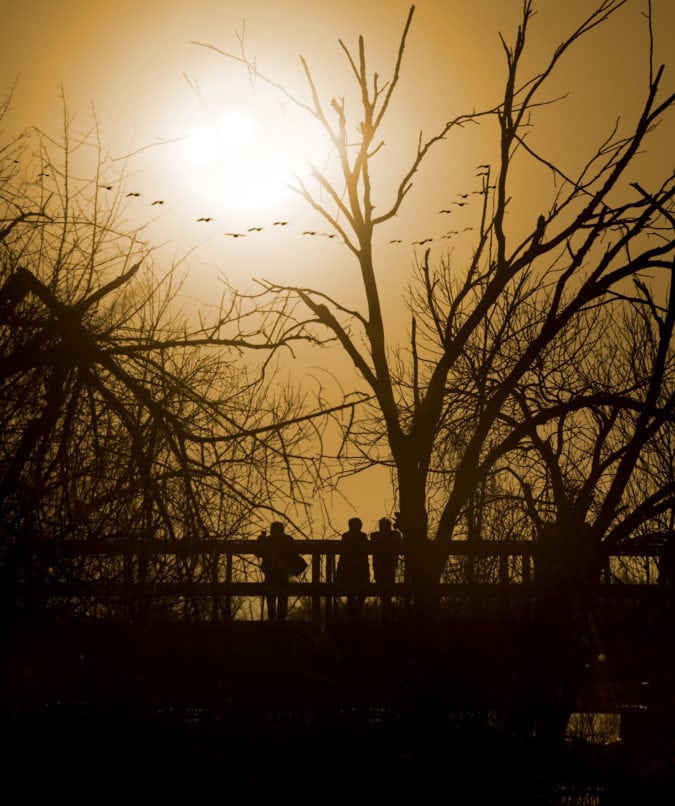
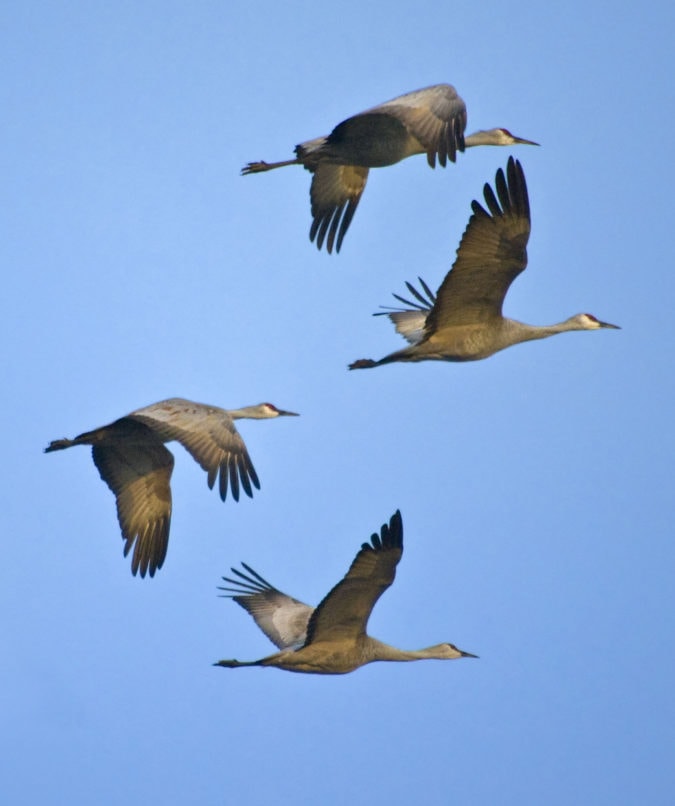
According to Nicole Arcilla, lead scientist at the Crane Trust, whooping cranes are especially vulnerable due to their minuscule population size and specialized wetland habitat requirements. With predicted atmospheric carbon increases hitting all-time high levels by 2050, Arcilla and her team are concerned about the continued recovery rate of the whooping cranes—and their potential demise.
“[Currently], we see a four percent annual population growth, but according to research we’ve done at Crane Trust, we’re seeing that these predicted conditions may require eight times longer with roughly a 30 percent chance of population decline,” Archilla says.
In a nutshell: See these cranes while you still can.
Taking flight
Both Rowe Sanctuary and Crane Trust use blinds for those who wish to view the cranes. These enclosed wooden boxes blend in with the surrounding environment to avoid disturbing the birds. Using viewing windows—some with plexiglass covers and some open air—visitors are able to see the cranes from a closer perspective. Rowe’s blinds are not heated, but it feels good to step out of the rain—and the view is spectacular.
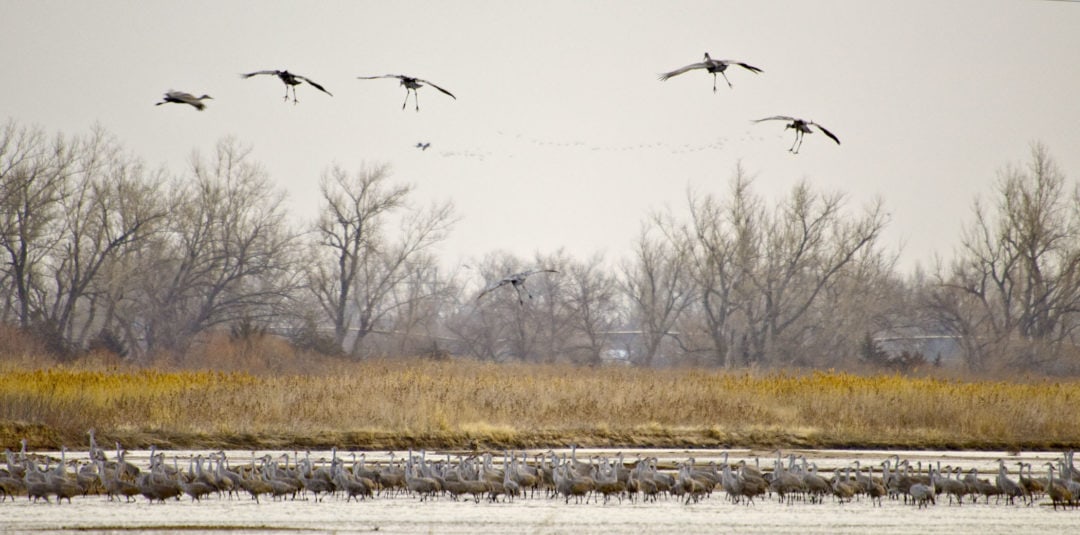
I step closer to the viewing window, squinting my eyes against the gradually-brightening horizon. Roughly 100 yards in front of me, I see groups of black bumps stoically standing on one leg—the cranes’ preferred sleeping posture—in the shallows. I ask our guide why the birds are not moving.
“Just give it time,” he responds. “Once they wake up, it will be like nothing you’ve ever seen.”
Impatiently, I scan the horizon, watching an errant crane or two awake and take flight. The darkened silhouettes are impressive but I want to see the main event. I want to see thousands of cranes fill the sky.
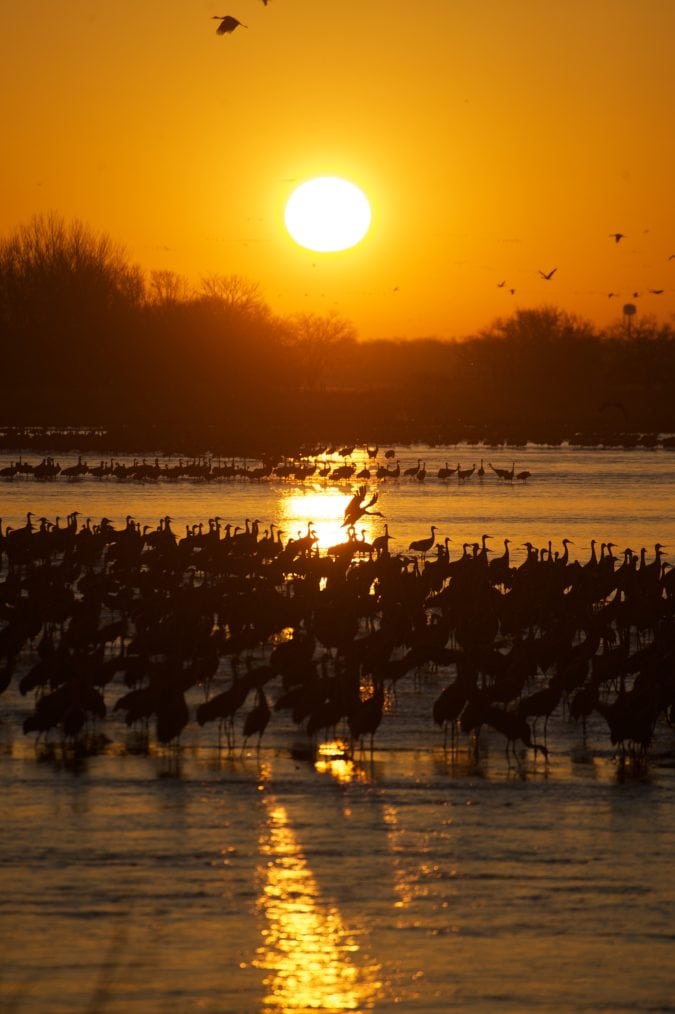
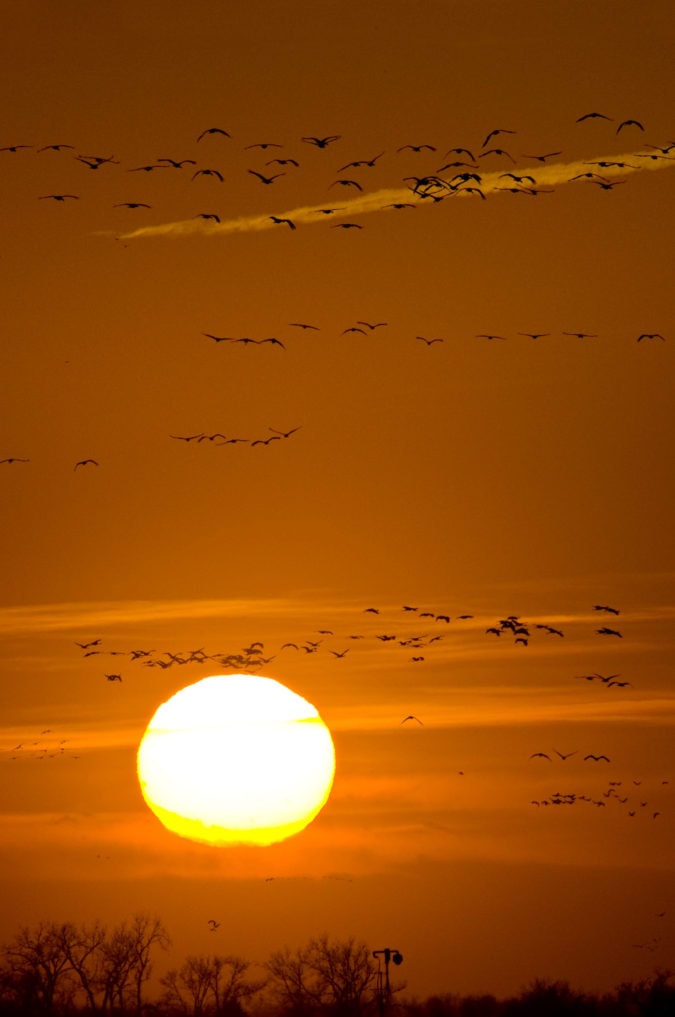
The morning glow transitions from pale orange to vibrant red and my eyes adjust, almost as if someone turned the focus on. Cranes are everywhere. Some stand in massive clumps of thousands while other rogue birds are sleeping in smaller groups. As my eyes quickly dart from side to side in an attempt to soak it all in, I see a handful of sandhill cranes begin to flap their wings. Feathers fly everywhere and a loud bugle call pierces the air, acting as the avian version of Reveille. It’s time to fly.
Swaths of cranes rise into the sky, creating a ripple effect as more and more birds awaken and join the flock. For a brief moment, the sky darkens as thousands of cranes fly across the horizon and temporarily obscure the sun. They’re headed out for a day of foraging old corn in nearby fields, and if their deafening screams are any indication, these birds are hungry.
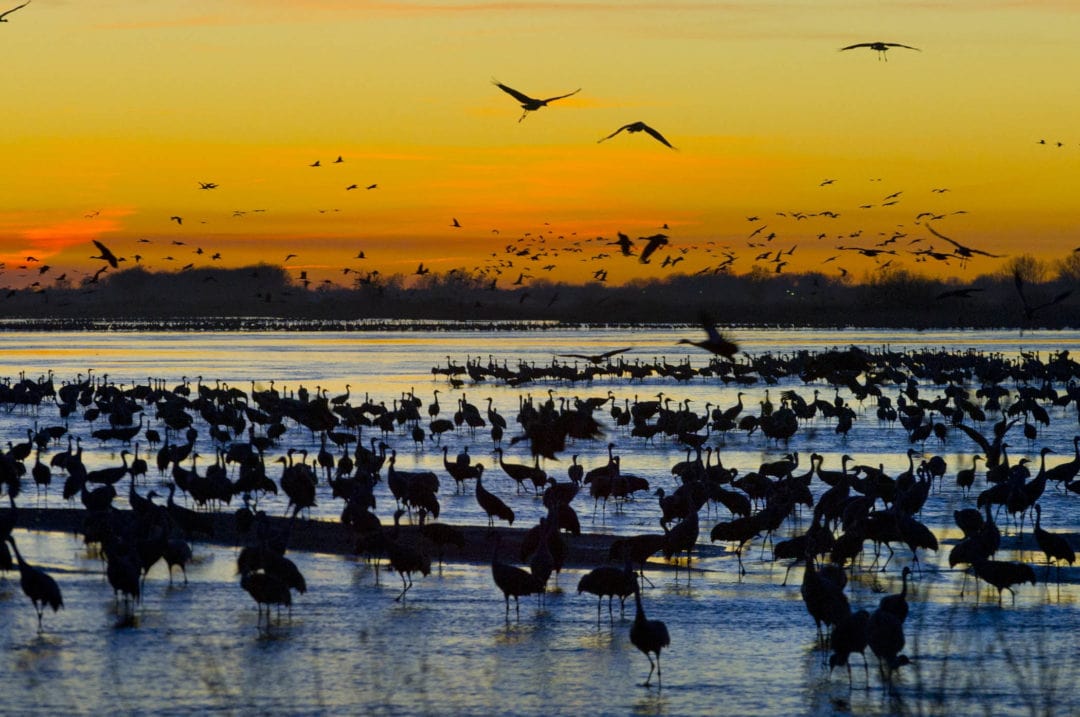
Mesmerized, I stand in the blind and stare unblinkingly until the party is gone. A few stragglers are left in the shallows, remaining behind out of laziness or exhaustion. But I feel exhilarated. Witnessing Mother Nature’s power is both beautiful and humbling, and I can’t wipe the smile from my face. I turn around and see our guide watching me.
“Told you it was good,” he laughs.
If you go
The migration takes place in the spring and typically peaks at the end of March. To learn more about the cranes, visit one of Nebraska’s excellent conservation centers: Crane Trust in Wood River or Iain Nicolson Audubon Center at Rowe Sanctuary in Gibbon.


